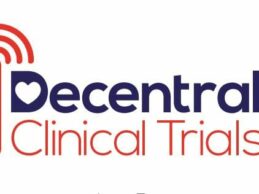The Centers for Medicare and Medicaid Services (CMS) strive for innovations in healthcare technologies that drive down costs and improve the patient experience. One big step forward is the 21st Century Cures Act passed in 2016, putting patients in charge of their own health records.
Then in 2021, both the CMS Interoperability and Patient Access Final Rule and the Office of the National Coordinator for Health IT (ONC) Information Blocking Rule went into effect, which aims to drive
Read More
4 Ways Hospitals Benefit From Improved Surgery Scheduling
Hospitals rely on elective surgeries as a source of up to 50% of all revenue, allowing them to take losses on a range of high-cost service lines to remain profitable. The COVID-19 pandemic laid bare the impact of reduced surgery volume, with hospitals suffering immediate revenue loss and negative profit margins.
As surgical service lines return to pre-pandemic volumes, it’s imperative for hospitals to have the right technology tools and best practices in place to maintain safe, accurate, and
Read More
Learning from Financial Fraud Detection to Tackle Opioid Abuse Amid COVID-19
Despite falling from its prominent place in the headlines, America’s opioid crisis is still raging. Anxiety, stress, depression, and isolation caused by the pandemic have contributed to substance use disorders. At the same time, the Drug Enforcement Administration has loosened prescribing restrictions, including waiving the requirement for in-person visits and allowing clinicians to prescribe controlled substances via telemedicine alone.
Given these conditions, it is not surprising that over
Read More
3 Ways Digital Health is Transforming Decentralized Clinical Trials
Decentralized Clinical Trials (DCTs) have been gaining steam over the last decade, but it was the COVID-19 pandemic that cast its advantages into the limelight. Sponsors benefit by creating efficiencies virtually throughout drug discovery, research, and treatment phases. However, the greatest long-term benefactors will ultimately be the patients.
Many aspects of traditional clinical trials are inconvenient for potential candidates, including the commute distance to trial sites, time
Read More
4 Ways 5G is Transforming Healthcare & Patient Care
We hear a lot about 5G technology, but for many of us, it's link to our lives goes as far as our smartphones and mobile service providers. But to think that 5G technology is only valuable for making our data speeds faster is like saying that electricity is great because it allows us to read books before bed. Sure, both are favorable side effects, but the impacts of each invention are far more widespread than that.
A lot of industries have been disrupted by 5G technology — the video game
Read More
4 Trends in Senior Care Critical for the Future of Interoperability
When America’s seniors went to their first doctor’s appointment, they couldn’t have imagined that their health history would be stored anywhere but in a manila folder. Now, nine out of every 10 physicians use electronic health records (EHRs), and patient's health data lives on cloud servers. Though we’ve certainly come a long way from handwritten notes in filing cabinets, electronic health data still often exist in silos, and that can make caring for our aging population difficult.
Consider
Read More
How Machine Learning Is Helping Consumers Take Action on Their Health
For years machine learning (ML) has been touted as a way for health plans to leverage the mounds of data they collect on their members, but practical use cases remain relatively uncommon. For some, the perception may be that ML is a futuristic and somewhat impersonal way to operate, but the exact opposite is true — ML is already being used and is here to stay, and when deployed correctly it actually creates a more personalized experience for members.
The first thought might be that ML and
Read More
SDOH Strategies All Provider Organizations Should be Adopting Now
There is growing concern among many well-respected providers about the consequences of fewer preventive services over the past 1½ years as a result of the COVID-19 pandemic. As patients slowly start to resume care throughout 2021 and into 2022, experts predict we will see a spike in the number of severe or late-stage diagnoses that normally would have been caught much earlier. As a result, we may face more complex situations and costlier treatments in terms of their economic, physical, and
Read More
Hospital at Home: Aligning Provider Needs with Patient Wishes
2020 saw three factors combine to define the future of “Hospital at Home” care in a way that will become a new care reality over the coming years.
Changing Patient Attitudes
Patients became more reluctant and concerned about going to hospitals. The fear of contracting illnesses such as Healthcare Acquired Infections (HAIs), like sepsis, is a real and legitimate concern. While the number of patients has been declining, around 100,000 people die each year in the US from contracting an HAI in
Read More
4 Best Practices to Deliver Virtual Palliative Care for Providers
More and more people are living with serious illnesses such as cancer, heart failure, chronic obstructive pulmonary disease and liver disease. The National Center for Chronic Disease Prevention and Health Promotion (NCCDPHP) reports that 60 percent of U.S. adults have a chronic disease, which is the leading cause of death and disability and the leading driver of healthcare costs.
Palliative care is well-positioned to meet the unique needs of seriously ill individuals by helping to deliver
Read More











